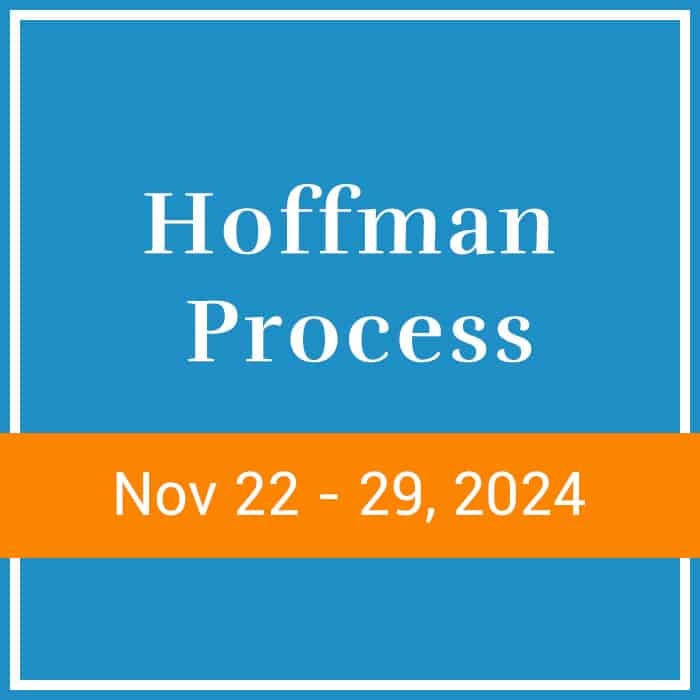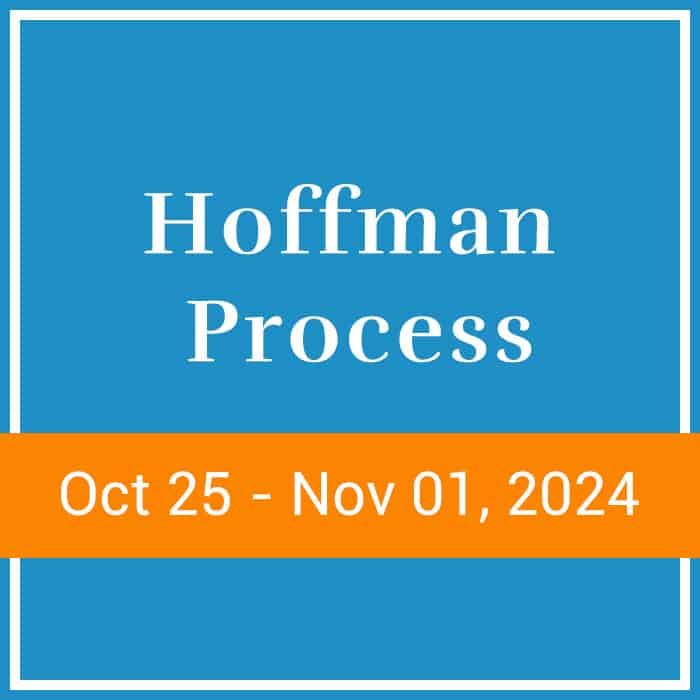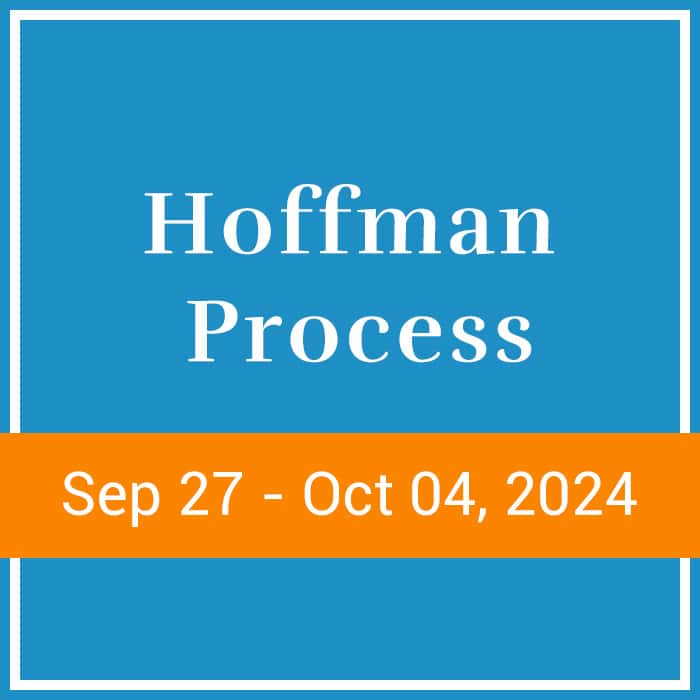Do you ever notice how your body responds to stress and worry? Maybe your heart pounds like there’s a drum in your chest. Or maybe your stomach feels like it’s tied up in knots. Have you ever calmed yourself down by breathing deeply or taking a walk?
Though they are often thought of as two separate entities, the mind and body are intricately intertwined. And when you have unresolved trauma, it’s crucial that you involve the body in your healing. Talk therapy can only go so far.
What about trauma that didn’t even happen to you? Can this affect the body too? Research says yes. Memories of traumatic stress can be encoded through epigenetics in our DNA, echoing through subsequent generations. If a woman experiences violence during her pregnancy, not only does the DNA of her child get altered, but so does the DNA of her future grandchildren, who may become more fearful or aggressive as an adaptive response.
During the Hoffman Process, expressive work can be a demanding physical experience. Mention “wiffle bat” or “batting” to any Hoffman graduate, and they will know exactly what you’re talking about. This work helps to acknowledge and ultimately transform negative emotions that are stuck in the body, many of them inherited from parents or caregivers and the generation before them. After all, what the mind represses, the body expresses. When the body is subjected to chronic stress, the risk of developing heart disease, sleep problems, obesity, and overall lack of vitality is widely acknowledged. When we can express our repressed emotions connected to these old traumas, we can also reclaim our physical aliveness – the body can go back to rest and recuperate.
Here are some ways to strengthen the mind-body connection and start addressing unresolved trauma:
Activate and acknowledge
To heal trauma, we must go back to the same level of activation in the body that occurred during traumatic periods in childhood. By triggering adrenal stimulation, the body has an opportunity to process what is stuck in the body, opening the door to healing. In the Process, participants use their body and voice to unearth strong emotions that may have been previously denied, or memories that have been long repressed. They have a chance to tell their story, to express the hurt they’ve carried around since childhood. Beyond being cathartic, this expressive work can also be empowering, allowing participants to reclaim what is rightfully theirs and create distance between themselves and the patterns they unconsciously adopted in response to trauma.
Even if you don’t have a wiffle bat or have no interest in batting a pillow while speaking your truth, there are numerous ways to experience this expressive work. Throwing rocks in a lake, chopping wood, hitting a punching bag, or swinging a tennis racquet are all suitable replacements. As you move your body and your voice, trauma moves too, allowing negative emotions to get unstuck and released. (This is usually better done with a trained facilitator present.)
Be witnessed
Becoming activated isn’t about retraumatizing yourself. When addressing trauma, it’s crucial to offer a resolution. During the Process, participants resolve trauma by having corrective experience with the support of their facilitator and fellow group members. Instead of fighting or fleeing, they are not just allowed to express what needs to be expressed without judgement; they are provided with a corrective experience. This can be extremely healing.
Learn to self-soothe
As important as acknowledging how negative emotions affect the body, it’s key to also note where comfort lives. Mindfulness allows us to move between trauma and comfort, sending calm breaths to a knot in the stomach to loosen its grip, or allowing a warm memory of a kind person or a cuddly teddy bear you had as a child to melt away the tightness in your clenched jaw. Moving back and forth between trauma and comfort becomes easier with practice, allowing you to experience a range of emotions and release them, never becoming too overwhelmed or attached.
Be courageous
You cannot be fully open to joy without also being open to pain. Confronting unresolved trauma takes courage but having a support system on hand can make the leap less daunting. Emerging from the ordeal may also require courage as you encounter the unfamiliar. On the other side of trauma, you may notice yourself responding differently to your environment and your environment may respond differently to you. Maybe you’re more approachable, more vulnerable, more assertive. Maybe you smile more, slouch less, and speak louder. Without old stressful patterns holding you back, who do you hope to be?
This article was contributed by Erica Garza. Follow @ericadgarza on Instagram










